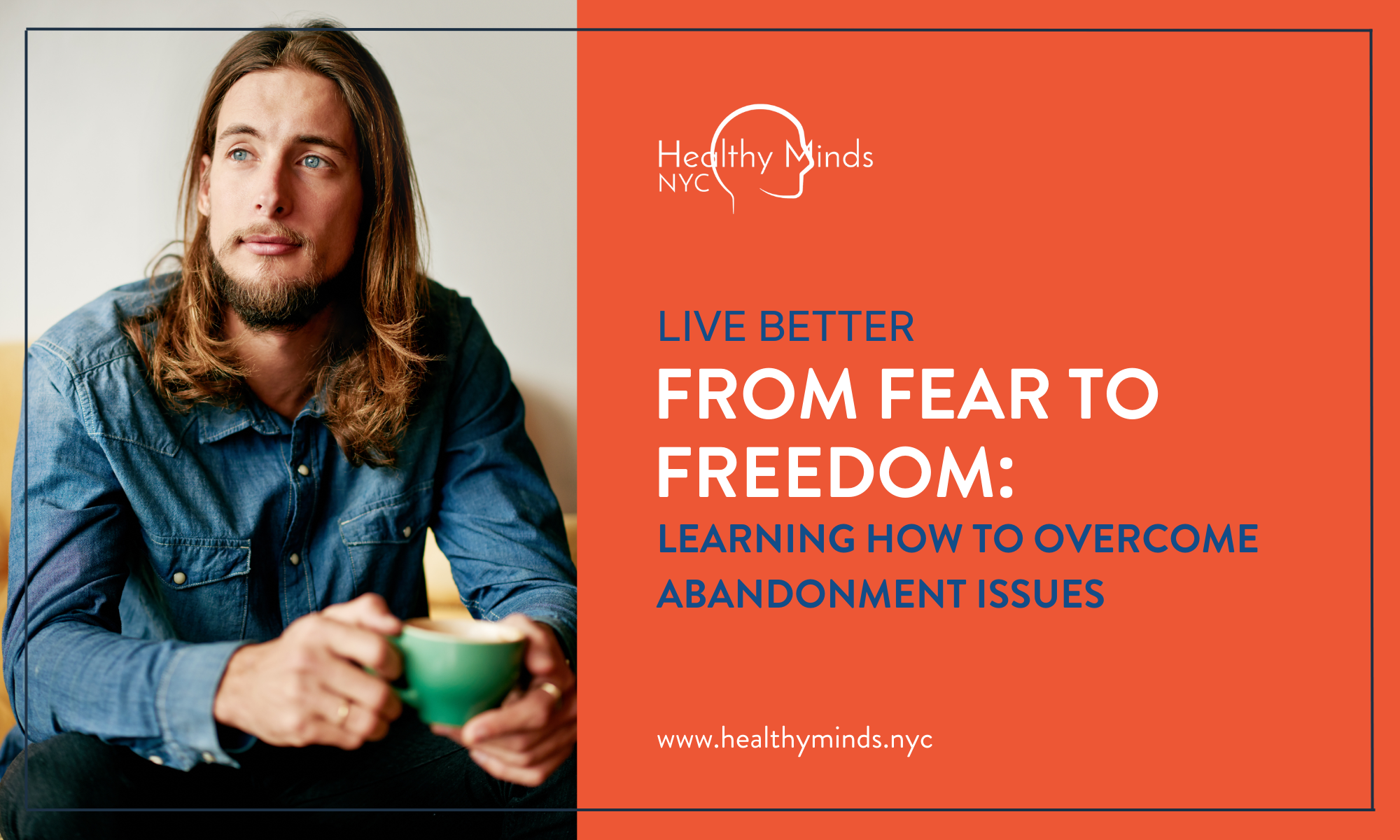From Fear to Freedom: Learning How to Overcome Abandonment Issues
Abandonment issues can sneak into our lives in ways we don’t always expect—sabotaging relationships, stirring up anxiety, and making us question our worth. Whether they stem from childhood loss, emotional neglect, or painful breakups, these issues often leave us feeling stuck in cycles of fear and disconnection. If you’ve ever found yourself asking, “Why do I always fear people will leave?”, you’re not alone. Learning how to overcome abandonment issues takes time, but healing is absolutely possible. This blog will walk you through the process step by step, answering the most common questions with honesty, compassion, and clarity.
HOW DO I FIX ABANDONMENT ISSUES?
The first step in learning how to overcome abandonment issues is understanding where they come from. Often, these fears originate from early experiences—like a parent leaving, inconsistent caregiving, or repeated emotional rejection. But even if those roots go deep, change is still possible.
Here’s what healing might look like:
Start with self-awareness. Notice when you’re feeling triggered. Do you panic when someone doesn’t text back quickly? Do you test your partner’s love or push people away when they get close? These are clues your abandonment wounds are active.
Challenge the narrative. People with abandonment issues often carry a core belief that they’re not worthy of lasting love or stability. Try reframing those thoughts. Instead of “They’ll leave me like everyone else,” try “It’s okay to need reassurance, and I can ask for it directly.”
Work with a therapist. A trained mental health professional can help you explore these patterns in a safe, non-judgmental space. Learning how to overcome abandonment issues often means rewiring your nervous system’s response to connection—and therapy is one of the best places to do that.
CAN ABANDONMENT ISSUES BE HEALED?
Yes—abandonment issues can absolutely be healed. But like most meaningful emotional work, it doesn’t happen overnight.
Healing is a gradual process that often includes:
Rebuilding trust in yourself. When you’re used to being left or disappointed, it’s easy to believe you can’t rely on anyone. One powerful shift comes when you realize you can be a consistent, loving presence in your own life. That inner trust is foundational in learning how to overcome abandonment issues.
Forming safe, secure relationships. Healing doesn’t have to happen in isolation. Healthy relationships—romantic, platonic, or therapeutic—can show you that it’s possible to feel loved without fear of loss.
Practicing nervous system regulation. Abandonment fears often come with a physiological punch: racing heart, panic, or emotional shut down. Techniques like deep breathing, grounding, and mindfulness can help calm your body when you feel unsafe.
Healing doesn’t mean you’ll never feel afraid of losing someone again. It means that fear won’t control you anymore.
HOW DO YOU DEAL WITH ABANDONMENT IN A RELATIONSHIP?
Being in a relationship while struggling with abandonment issues can feel like trying to build a house during a windstorm. You want closeness, but it feels risky. You crave reassurance, but you’re afraid to ask for it.
Here are a few ways to handle abandonment fears in a relationship:
Communicate openly. It’s okay to let your partner know you’re working through abandonment issues. Say something like, “Sometimes I worry you’ll leave, even though I know there’s no reason to think that. I just need a little extra reassurance today.” Vulnerability like this can build deeper intimacy.
Notice your coping strategies. Some people cling, some people pull away. The goal isn’t to judge yourself, but to become curious: Is this behavior helping me feel closer to my partner—or pushing them away?
Create rituals of connection. Consistent acts like check-in texts, scheduled date nights, or loving goodbyes can help ease the unpredictability that triggers abandonment fears.
Knowing how to overcome abandonment issues while in a relationship often means balancing self-regulation with healthy interdependence. You don’t have to “fix” everything alone, but you also don’t need to hand over the responsibility for your emotional safety to your partner.
WHAT ARE THE 5 STAGES OF ABANDONMENT HEALING?
Healing abandonment is rarely a straight line. But many therapists and authors describe five stages that tend to show up during the process. Understanding these can normalize your experience and remind you that healing is a journey—not a destination.
Shattering
This is the initial pain, where you feel like the ground has disappeared beneath your feet. The loss (real or perceived) triggers a deep emotional wound. Everything feels unstable.Withdrawal
Similar to withdrawal from addiction, this stage includes craving the person who left or the feeling of security that’s now gone. You might feel physically ill or emotionally flooded.Internalizing
In this phase, many people blame themselves. “If I were better, they wouldn’t have left.” This is where shame and low self-worth often live. Learning how to overcome abandonment issues means challenging these internal messages and reconnecting with your value.Rage
Anger can feel uncomfortable, but it’s actually a sign of progress. You’re reclaiming power, setting boundaries, and acknowledging that you were hurt—and that it wasn’t your fault.Lifting
This is where lightness starts to return. You begin to trust again, not just in others, but in your ability to handle life’s uncertainties. Love no longer feels like a threat—it feels like a gift.
Remember, you might move through these stages more than once. That’s okay. Each time, you move through them with more awareness and resilience.
FINAL THOUGHTS
Learning how to overcome abandonment issues is a brave and beautiful process. Whether you're navigating relationship anxiety, childhood wounds, or just starting to notice your patterns, healing is within reach. You don’t have to do it alone—and you don’t have to be perfect to be worthy of love. If you’re ready to take the next step, consider working with a therapist who understands the deeper layers of abandonment—and can help you write a new story of connection, security, and self-worth.



